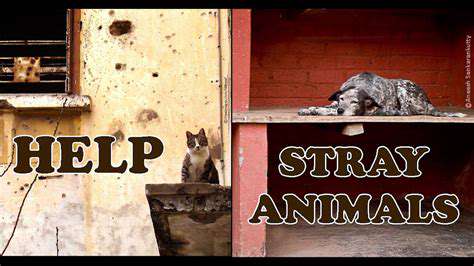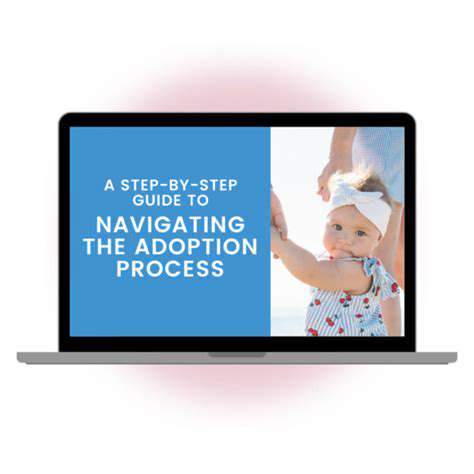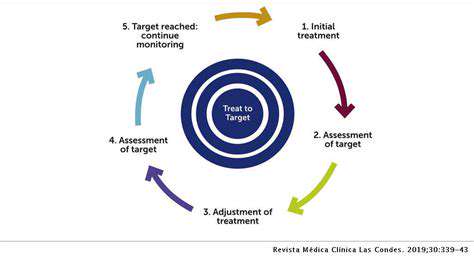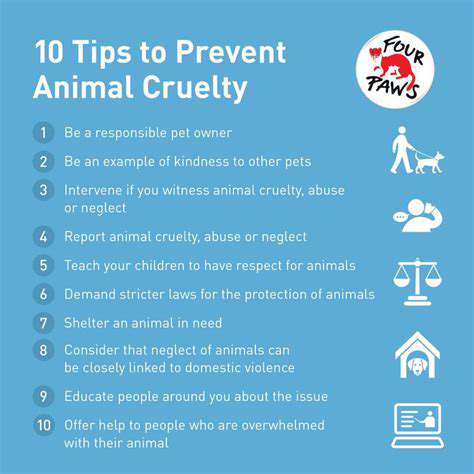The Truth About Stray Animals in Your Area
Understanding the Scope of the Problem
Stray animal populations are a complex issue affecting communities globally, often underestimated in their true magnitude. Beyond the immediate visibility of roaming animals, there are significant hidden costs and consequences. These range from the direct impact on public health and safety to the more subtle, yet pervasive, effects on local ecosystems and the overall well-being of the community. Addressing this problem requires a multifaceted approach, recognizing the interconnectedness of various factors contributing to the issue.
The sheer number of stray animals can be overwhelming. Rapid population growth, coupled with inadequate resources for animal control and management, often leads to an exponential increase. Understanding the specific factors driving these populations, such as a lack of spay/neuter programs, insufficient food sources, or even a lack of effective trapping and relocation strategies, is crucial to developing targeted solutions.
The Impact on Public Health and Safety
Stray animal populations can pose significant risks to public health. The potential for the transmission of diseases, both to humans and to other animals, is a serious concern. Uncontrolled populations often lead to increased instances of rabies, parasites, and other contagious illnesses. Furthermore, the presence of large numbers of stray animals can create safety hazards, particularly in urban areas, impacting pedestrian and vehicular traffic, and potentially leading to aggressive encounters.
Addressing these health and safety concerns requires a combination of preventative measures, such as vaccination campaigns for both stray and owned animals, and proactive strategies for animal control and management. This includes proper waste disposal and the creation of safe spaces for both stray and owned animals.
The Ecological Consequences
Stray animals can have significant ecological consequences, impacting local ecosystems and biodiversity. Competition for resources, such as food and water, can disrupt the natural balance of the environment. Invasive species, sometimes stemming from stray animal populations, can further exacerbate these issues. Understanding the specific ecological impacts in a given area is crucial for developing effective solutions.
The introduction of stray animals into ecosystems can cause imbalances in the food web. Predation patterns may change, and the distribution of native species may be altered. Careful consideration of the ecological consequences is essential when developing strategies to manage stray animal populations, ensuring that any intervention doesn't inadvertently cause further harm to the environment.
The Economic Burden
The economic burden of managing stray animal populations is often overlooked. Costs associated with animal control, veterinary care, and potential public health interventions can be substantial. These expenditures often strain local resources and divert funds from other essential community services. The economic impact is not simply limited to the direct costs, but also encompasses indirect costs, such as lost productivity and potential damage to property and infrastructure.
Effective management strategies are crucial to mitigating the economic burden. Investing in preventative measures, such as comprehensive spay/neuter programs and responsible pet ownership education, can significantly reduce the long-term costs associated with stray animal populations. Implementing sustainable animal control strategies and creating partnerships between local communities and animal shelters can help to optimize resource allocation and ensure long-term economic viability.
Factors Contributing to Stray Animal Populations: A Multifaceted Perspective
Environmental Factors
One significant contributor to stray animal populations is the availability of food sources in urban and suburban environments. Leftover food, discarded garbage, and even readily available agricultural byproducts often create a readily accessible food supply that attracts and sustains stray animals. This abundance of food reduces the animals' need to forage extensively for sustenance, allowing them to thrive and reproduce in areas where they might otherwise struggle to survive.
Furthermore, the lack of natural habitats and prey in human-dominated landscapes can force animals into close proximity with human settlements, leading to increased interactions and potential conflict. The degradation of natural ecosystems due to urbanization and agriculture disrupts the natural food chains, forcing animals to seek alternative sources of sustenance, often leading to encounters with humans and a reliance on human-provided food.
Human Activities and Practices
Irresponsible pet ownership is a major driver of stray populations. Abandonment of pets, either intentionally or through neglect, releases animals into the wild where they must fend for themselves. This often results in a rapid increase in the stray population, as these animals struggle to find food, shelter, and mates in unfamiliar territories.
Additionally, a lack of responsible spay/neuter programs contributes significantly to the problem. Unspayed and unneutered animals reproduce at a rapid rate, leading to a rapid increase in the stray population. Without controlled breeding, the population grows exponentially, placing a strain on resources and increasing the risk of conflicts between animals and humans.
Lack of Effective Control Measures
Insufficient or poorly implemented animal control measures can exacerbate stray animal populations. Limited resources for trapping, relocation, and euthanasia can result in an overwhelming number of animals in need of care. This not only creates a public health risk but also contributes to the overall population growth.
Furthermore, inconsistent enforcement of animal control ordinances can allow irresponsible pet owners to continue their practices without consequence. A lack of stringent regulations and penalties for animal abandonment can lead to a continued cycle of animal overpopulation and suffering.
Economic Factors
Poverty and economic hardship often play a significant role in the development of stray animal populations. In many communities, individuals facing economic hardship may be unable to afford the costs associated with pet ownership, such as food, veterinary care, and shelter. This lack of economic security can contribute to the abandonment of animals and the subsequent increase in the stray population. Poverty can also lead to a lack of education about responsible pet ownership, further exacerbating the issue.
Inadequate Veterinary Care and Resources
The scarcity of accessible and affordable veterinary care for stray animals presents a significant challenge. Limited access to vaccinations and treatment for illnesses and injuries can result in a higher mortality rate among strays, and the spread of diseases within the population. This lack of veterinary care not only affects the health of individual animals but can also impact public health if diseases are transmitted to humans.
Cultural and Social Norms
Cultural attitudes and social norms surrounding animal ownership can significantly influence stray populations. In some cultures, the practice of abandoning animals or allowing them to roam freely is more prevalent. This can result in a higher number of strays, as there is less emphasis on responsible pet ownership. Social norms and cultural practices vary across regions, impacting how animals are treated and managed, which in turn influences the stray population dynamic.
Addressing the Needs of Stray Animals: A Holistic Approach

Understanding the Scope of the Stray Animal Problem
Stray animal populations are a significant issue in many communities worldwide, presenting a complex web of challenges that affect both animal welfare and public health. These populations often arise from a combination of factors, including irresponsible pet ownership, lack of spay/neuter programs, and inadequate resource management. The consequences of uncontrolled stray animal populations extend beyond the immediate suffering of the animals themselves, impacting local ecosystems and potentially posing risks to human safety.
Addressing this issue requires a holistic approach that considers the multifaceted nature of the problem. Identifying and understanding the specific needs of these animals, such as access to food, shelter, and veterinary care, is crucial for developing effective solutions. Furthermore, tackling the root causes of stray animal populations, such as promoting responsible pet ownership and supporting community-based solutions, is essential for long-term sustainability.
Providing Essential Resources for Stray Animals
Stray animals often lack basic necessities like food, water, and shelter. Providing access to these resources is paramount for their survival and well-being. This includes establishing feeding stations with appropriate hygiene practices, and ensuring a safe space for them to rest and avoid the elements. Prioritizing their health and safety is paramount to any effective strategy. Establishing temporary or permanent shelters, even on a small scale, can significantly improve their quality of life and reduce the risk of disease transmission.
Ensuring access to veterinary care is equally important. This includes spaying and neutering procedures to control population growth, vaccinations to prevent illness, and treatment for injuries or existing conditions. Providing this essential medical care is crucial for preventing the suffering of individual animals and reducing the overall burden on the community.
Promoting Sustainable Solutions for Long-Term Impact
Long-term solutions for stray animal issues go beyond immediate care and focus on preventing future problems. Crucial to this is promoting responsible pet ownership through education and outreach programs. These programs can emphasize the importance of spaying and neutering, providing information on pet care, and encouraging adoption over breeding. Encouraging community involvement in these programs is key to their success.
Collaboration between local governments, animal shelters, and community organizations is critical for developing and implementing sustainable strategies. Effective communication and coordination are essential for ensuring that resources are efficiently allocated and that programs are tailored to the specific needs of the community. This includes long-term planning and monitoring to track the effectiveness of different interventions and adapt approaches as needed.
The Human-Animal Interface: Fostering Coexistence

The Importance of Understanding the Bond
The human-animal interface encompasses the complex relationship between humans and animals, spanning interactions from companionship to agricultural practices. Understanding this interface is crucial for fostering harmonious coexistence and addressing potential conflicts. A deep understanding of animal behavior and needs is essential for creating a positive and sustainable relationship. This multifaceted area touches upon ethical considerations, environmental impacts, and even public health implications.
Animals play a vital role in our lives, offering companionship, emotional support, and even practical assistance. Recognizing the reciprocal benefits of these interactions, from the joy a pet brings to a family to the therapeutic value of animal-assisted therapy, is paramount to responsible human-animal engagement.
Ethical Considerations in Animal Husbandry
Ethical considerations are paramount in the context of the human-animal interface, particularly in agricultural settings. Modern animal husbandry practices must prioritize animal welfare, ensuring humane treatment and minimizing suffering. This includes providing adequate living spaces, proper nutrition, and veterinary care. Focusing on the ethical treatment of animals within our food systems is critical for fostering a more sustainable and compassionate approach to agriculture.
Animal rights and welfare organizations play a vital role in advocating for the ethical treatment of animals used for food, research, and companionship. Their work often involves raising public awareness and lobbying for stronger regulations to ensure that animals are treated with respect and dignity.
The Role of Animals in Human Health
Animals play a significant role in human health, both physically and mentally. Pet ownership, for example, has been linked to lower blood pressure and stress levels. Animal-assisted therapy programs have demonstrated positive outcomes for individuals dealing with a range of mental health conditions. These interactions, both large and small, can positively impact human well-being and resilience.
Beyond companionship, animals contribute to human health in other ways. For example, livestock animals are a crucial source of food and fiber. Furthermore, advancements in understanding animal diseases can help us develop better strategies for preventing and treating human ailments.
Environmental Impacts and Conservation
The human-animal interface has significant environmental implications. Overgrazing, deforestation, and habitat loss are just a few examples of how human activities can negatively impact animal populations. Sustainable agricultural practices and conservation efforts are essential for maintaining biodiversity and safeguarding the environment for future generations. Protecting animal habitats is critical for maintaining the delicate balance of ecosystems.
Conservation efforts often involve working with local communities and governments to develop sustainable practices that benefit both humans and animals. This includes promoting responsible land management, reducing pollution, and implementing effective wildlife protection measures.
The Economic Impact of Stray Animals: Hidden Costs and Solutions
Hidden Costs of Unmanaged Stray Populations
The presence of a large, unmanaged stray animal population can have significant and often underestimated economic consequences. Beyond the immediate costs of animal control and veterinary care, there are hidden costs that impact communities across various sectors. These hidden costs are often reflected in decreased property values, increased healthcare expenses due to zoonotic diseases, and lost productivity due to fear of animal encounters and the need for increased security measures.
Strain on Public Resources
Municipalities and governments bear the brunt of managing stray animal populations. This includes expenditures on animal control officers, shelters, and emergency services related to animal incidents. The costs associated with capturing, treating, and potentially euthanizing animals represent a substantial financial burden. Furthermore, the long-term implications of a continually growing stray population can lead to a significant and escalating demand for public resources, potentially diverting funds from other essential community services.
Impact on Property Values
The presence of stray animals can negatively affect property values in residential areas. Potential buyers and renters may be deterred by the perception of increased risk and potential nuisance factors, leading to lower property values for affected properties. This economic downturn is not just a localized issue; it can ripple through the local economy, impacting real estate agents, financial institutions, and the overall market stability within the community. It also hinders the ability of property owners to sell or rent their properties at optimal prices.
Zoonotic Disease Transmission and Healthcare Costs
Stray animals can be carriers of zoonotic diseases, which are diseases that can be transmitted between animals and humans. The risk of contracting these diseases increases with an unchecked stray population, leading to increased healthcare costs for individuals and the community as a whole. These costs include doctor visits, hospitalizations, and potential long-term health complications. Controlling and preventing the spread of zoonotic diseases requires significant investment in public health initiatives and proactive animal management strategies.
Loss of Productivity and Economic Activity
The presence of stray animals can create fear and anxiety, affecting the daily lives of residents and impacting local businesses. This fear can lead to reduced productivity in the workforce due to anxiety and worry, as well as increased security needs for businesses and homes. These added costs to businesses, from increased security measures to lost productivity, can have a substantial impact on the local economy. This can also deter tourism and investment in the region.
Solutions and Mitigation Strategies
Addressing the economic impact of stray animals requires a multifaceted approach. Implementing comprehensive animal control programs, including trap-neuter-return (TNR) initiatives, can significantly reduce the stray population. Investing in community education programs to promote responsible pet ownership is crucial. Furthermore, supporting organizations that provide care and adoption services for stray animals can help reduce the burden on shelters and public resources. These measures can not only mitigate the economic consequences but also improve the overall well-being of both animals and communities.
Read more about The Truth About Stray Animals in Your Area
Hot Recommendations
- Review: [Specific Brand] Small Animal Cage
- Why Rescuing Pets Saves Lives
- Best Pet First Aid Kits [What to Include]
- How to Help Stray Animals in Your Community
- Guide to Adopting a Pet When You Have Kids
- Top Reptile Heat Lamps
- Heartwarming Rescue Stories That Will Inspire You
- Review: [Specific Brand] Bird Cage
- Best Aquarium Filters [2025 Review]
- Review: [Specific Brand] Smart Litter Box











![My Experience Rescuing a Farm Animal [Story]](/static/images/33/2025-07/BringingthePigletHome.jpg)